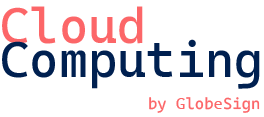Table of Contents
Introduction
Cloud computing has revolutionized the way businesses operate, but with great power comes great responsibility—especially when it comes to costs. As organizations increasingly migrate to the cloud, they often grapple with soaring expenses that can erode their profit margins. This is where cloud cost optimization strategies come into play. In this article, we will explore effective methods to manage and reduce cloud spending, ensuring that your organization harnesses the full potential of the cloud without breaking the bank.
Understanding Cloud Cost Optimization
At its core, cloud cost optimization is about making informed decisions that maximize the value received from cloud resources. Think of it as managing a household budget: if you’re not careful, costs can escalate out of control, leading to financial strain. Similarly, in the cloud environment, costs can accumulate swiftly due to underutilization, over-provisioning, or unnecessary services. By adopting strategic practices, businesses can turn their cloud infrastructure into a well-oiled machine that operates efficiently and economically.
The Pillars of Cloud Cost Optimization
Here are the key areas that organizations should focus on for effective cloud cost optimization:
- Resource Management: Continually monitor cloud services and resources, ensuring that you only pay for what you use.
- Rightsizing: Adjust instances to align with actual usage requirements, preventing overprovisioning.
- Data Storage Optimization: Use different storage options based on access frequency and need, optimizing costs associated with data storage.
- Automation and Monitoring: Employ tools and processes to automate scaling down of unused resources in real time.
- Multi-Cloud and Hybrid Cloud Strategies: Leverage the best pricing options across various cloud providers.
Real-World Examples
To illustrate the power of cloud cost optimization strategies, let’s delve into a few real-world scenarios:
- A SaaS Company: A Software as a Service (SaaS) company experienced high expenses due to unmonitored virtual machines. They implemented monitoring tools that flagged idle resources. By decommissioning these unused VMs, they reduced cloud spending by 30% in just three months.
- An E-Commerce Business: During peak sales periods, an e-commerce company scaled up its resources extensively. Post-sale, they neglected to scale back down. Upon realizing this, the organization automated scaling policies with serverless computing—reducing costs and adapting resources dynamically based on demand.
- A Financial Institution: To optimize data storage costs, a bank transitioned to a tiered storage management strategy. They moved rarely accessed data to cold storage solutions, saving over 50% on storage costs while still maintaining regulatory compliance and data accessibility.
Benefits of Cloud Cost Optimization
The advantages of implementing effective cloud cost optimization strategies extend beyond mere savings. Here’s how your organization can benefit:
- Improved Financial Predictability: Clear visibility into cloud expenditures enables better budget forecasting and planning.
- Enhanced Resource Allocation: By eliminating waste, resources can be reallocated to more strategic initiatives.
- Increased Agility: Organizations can scale resources up or down based on distinctive business needs, driving innovation without overspending.
- Competitiveness: Lower operating costs free up capital that can be reinvested into growth opportunities.
Steps to Implement Cloud Cost Optimization Strategies
Adopting cloud cost optimization strategies may seem daunting, but here’s a step-by-step approach to guide your efforts:
- Assess Current Usage: Begin with a detailed audit of your current cloud usage to identify underutilized resources.
- Set Clear Objectives: Align your cost optimization initiatives with broader business goals, ensuring that they contribute to overall strategic priorities.
- Choose the Right Tools: Invest in cloud management platforms or tools that provide visibility, automation, and management capabilities.
- Automate Where Possible: Implement automation techniques to dynamically manage resources based on usage patterns.
- Educate Your Teams: Foster a culture of cost awareness within your organization, ensuring that all teams understand the financial implications of cloud resource usage.
- Review and Iterate: Regularly revisit your cost optimization strategies, refining them based on new data and evolving business needs.
Conclusion
Cloud cost optimization is not just a trend but a crucial business strategy that can drive long-term success in an increasingly competitive digital landscape. By implementing the strategies outlined in this blog, your organization can mitigate unnecessary expenses, improve financial predictability, and allocate resources more efficiently. As cloud technology continues to evolve, maintaining a proactive approach to cost optimization will ensure that you not only harness the power of the cloud but do so in a financially sustainable manner. The future of cloud cost management is here—embrace it and propel your organization into a cost-efficient and innovative tomorrow.
FAQ
What are cloud cost optimization strategies?
Cloud cost optimization strategies are a set of practices aimed at maximizing the value received from cloud resources while minimizing unnecessary spending.
Why is cloud cost optimization important?
As cloud usage increases, so do costs. Optimization ensures businesses remain financially sustainable while leveraging the benefits of cloud technology.
How can organizations start optimizing their cloud costs?
By assessing current usage, setting objectives, choosing the right tools, and fostering a culture of cost awareness, organizations can effectively begin their optimization journey.
What tools are available for cloud cost optimization?
Various cloud management platforms and monitoring tools are available designed to provide insights, automate resource management, and enhance visibility into expenditures.
